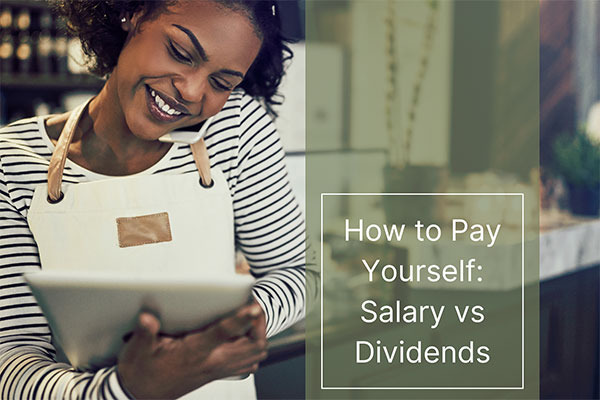Do you know the tax implications of drawing money out of your business?

We see the world as we are, not as it is!
Have you ever noticed that your perception of the same situation can be totally different to someone else’s? Perhaps you’re telling a story from your childhood and your sibling interrupts declaring that’s not what happened at all. Has this ever happened to you?
It’s fascinating. You were both there in the exact same moment, doing the exact same thing but end up having a totally different experience. This is because we each have our own unique ‘filter system’ made up of our personal beliefs, values, knowledge, life experiences and current state of wellbeing. This determines how we think, feel and ultimately what action we take.
A conversation between two Panthera staff has inspired this month’s blog topic. One person is an accountant. The other person is not and runs her own Limited company in her spare time. They were talking about taking money out of her business. The accountant commented that the money in the business “wasn’t technically hers”. The business owner quite firmly objected that it “was 100% hers, as she’s the only person in the business and worked blimin’ hard for it!”
Who’s right, and who’s wrong?
Well, in the technical world of Limited company accounting, the accountant is of course correct. But in the mind of the business owner, as a sole Director that money is hers as she earned it – who else did it belong to?!
It comes down to different perceptions of the same situation, based on different beliefs, experience and knowledge. Which can lead to some very interesting conversations.
We appreciate that most business owners are not accountants, and how to take drawings from your business is complex and a very common area of confusion. So, let’s look at the difference between salary versus dividends and the relevant tax implications.
Salary versus dividends
Most Limited company business owners pay themselves using a mix of salary and dividends as this is often the most tax efficient.
Salary
Firstly, you have a Personal Allowance of £12,570, which is the amount you can earn in a year without paying any personal tax.
Then depending on your salary income, the tax rates vary. If you pay yourself between £12,571 to £50,270 this is subject to 20% tax at the Basic Rate. If your salary is between £50,271 to £125,140 this goes up to the Higher Rate of 40% tax. Anything over £125,140 the Additional Rate of 45% tax will apply.
In a nutshell, the bigger the salary, the more tax you’ll pay! Especially if you push yourself into a higher tax bracket.
Dividends
If you’re a Director with shares in the company, you may receive a dividend payment. The good news is, you can also earn some dividend income each year without paying tax.
The Dividend Allowance was £2000 for several years but it’s currently being reduced. For the tax year of 6 April 2023 to 5 April 2024 the Dividend Allowance is £1000, and for the tax year 6 April 2024 to 5 April 2025 it will reduce further to £500.
The tax you pay on dividends over and above the Dividend Allowance also depends on your income tax band. The Basic Rate is 8.75%, the Higher Rate is 33.75% and the Additional Rate is 39.35%.
If you’re eagle-eyed, you may have spotted that the tax rates on dividend income are lower than the tax rates on salary income. In fact, well done you for getting this far into the article. We know that finances aren’t the most exciting topic for business owners. But we also know that everyone likes to pay as little tax as legally possible.
Let’s look at some examples of what tax you’ll need to pay based on different mixes of salary versus dividends.
Example 1
You get £3,000 in dividends and earn £29,570 in salary in the 2023 to 2024 tax year.
This gives you a total income of £32,570.
You have a Personal Allowance of £12,570. Take this off your total income to leave a taxable income of £20,000.
This is in the basic tax band so you would pay:
- 20% tax on £17,000 salary
- No tax on £1000 dividends, because of the dividend allowance
- 8.75% tax on £2,000 dividends
- TAX PAYABLE = £3,575
Example 2
You get £10,000 in dividends and earn £22,570 in salary in the 2023 to 2024 tax year.
This gives you a total income of £32,570.
You have a Personal Allowance of £12,570. Take this off your total income to leave a taxable income of £20,000.
This is in the basic tax band so you would pay:
- 20% tax on £10,000 salary
- No tax on £1000 dividends, because of the dividend allowance
- 8.75% tax on £9,000 dividends
- TAX PAYABLE = £2,788
Salary is usually paid monthly. Dividends are usually calculated based on how much profit the company is making, so these dividend payments are often paid quarterly or even annually. How much you pay yourself salary versus dividends, is dependent on your own personal financial situation.
It’s worth noting that savings can be made on the amount of National Insurance Contributions you have to pay if you choose to take a small salary and draw most of your income in the form of dividends. This is because limited company dividends are taxed separately and not subject to National Insurance Contributions.
In addition to this, a limited company can retain profits and distribute them as dividends in future tax years if necessary. This means that the directors can delay paying income tax on dividends during a good year and defer paying them until the following year as a way of receiving tax efficient income.
We hope this has provided some explanation regarding salary versus dividends. If you’re still unsure, the best thing to do is speak to your accountant BEFORE you take any drawings from your Limited company in any form. They can share the tax implications with you which will enable you to make a more informed decision – and avoid any nasty surprises!

